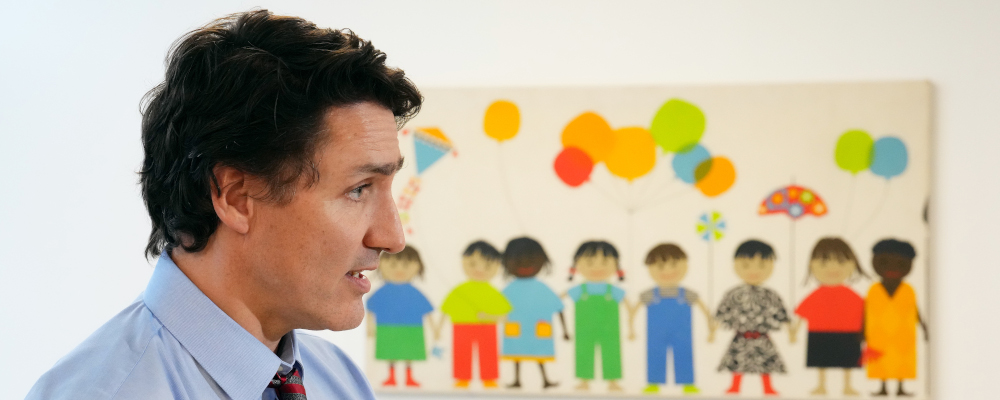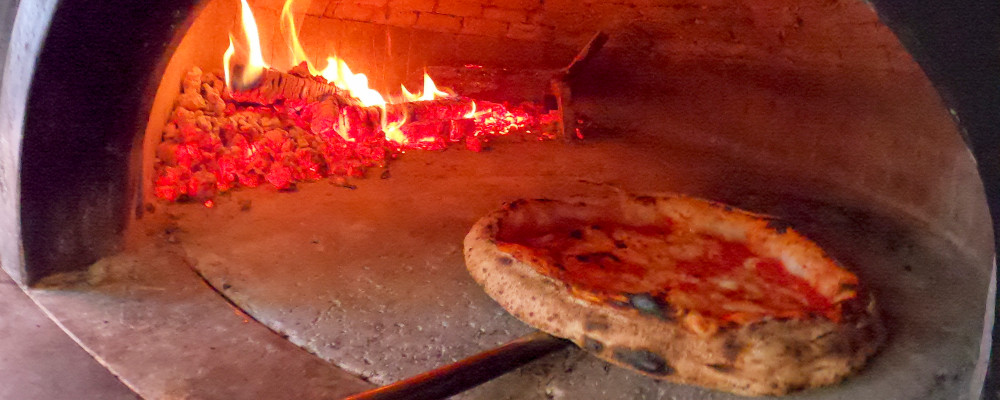I want to say a good word about the Pierre Elliot Trudeau Foundation. Maybe it’s my previously-confessed contrarianism, maybe it’s a hitherto undiagnosed masochistic streak, but when I see the sort of pile-on that we’ve witnessed over the last few days, my instinct is to try to find some saving grace and salvage something from the wreckage. In this case, it isn’t easy, but I’ll try.
But first the bad (and buckle up, there’s a lot). As Andrew Coyne put it, for much of its existence the Trudeau Foundation “appears to have been run like a cross between a college housepainting service and a Panamanian shell company”—an assessment that does a disservice to both college housepainters and Panamanian accountants. He’s right, and I won’t defend it. I’m not that contrarian or masochistic.
Nor am I interested in defending the inexplicable greed and gullibility that has been damningly revealed by Bob Fife and Steven Chase in the Globe and Mail. What would possess the foundation’s board to accept donations from a transparent front for the Chinese Communist Party is beyond me, and beyond my sympathy. It’s not like a foundation sitting on a $125 million plus taxpayer endowment needed the money.
So what is left to defend? Two things, I think.
First, the foundation’s work, which was the target of a drive-by hit from the usually astute Brian Lilley in the Sun earlier this week. Lilley opened by asking “[i]f the Trudeau Foundation ceased to exist, would Canadians notice?” It’s a silly question that typifies an attitude that is unfortunately common in politics: if something doesn’t affect you and your life, it can’t have much value.
Lilley notes that the Trudeau Foundation was originally set up to create a program similar to the British Rhodes Scholarship program, but “after 21 years” he’s “not sure they can claim success on that front.” I don’t know what he’s basing this judgement on, but it sounds to me like he has too lofty an opinion of Rhodes scholars and too low an opinion of Trudeau scholars.
I can only speak from experience (which includes meeting quite a few scholars from both programs in Canada and in Oxford), but on balance, the Trudeau scholars stack up well. If a lot of what they have produced is “much of … the same banal material academics produce elsewhere” that says more about the state of academia than the foundation’s selection process. And I can assure you, the work of Rhodes scholars is no more inspiring.
Second, and this may seem like a small thing, I want to praise the decisive action by the foundation’s executive and (most of) its board. When was the last time anyone in Canadian public life took responsibility for anything the way they did, resigning en masse? Faced with similar allegations of interference in their own party, has a single Liberal cabinet minister demurred, let alone departed?
Again, my information is anecdotal, but friends I trust have told me that the now-former president and CEO, Pascale Fournier, was doing an excellent job stewarding the selection and development of the program’s scholars. Like many who resigned, she was not in charge when the board decided to accept the Chinese tea money, and from what has been reported, her team went to grimly comical extremes to try to give it back.
I’m not saying everyone who resigned is blameless, but as I see it most of the foundation’s past incompetence, including accepting the dodgy donation, can’t be reasonably pinned on the management that resigned. And yet they still resigned. I don’t want to make it out to be a more heroic act than it was, but it was refreshing to see someone step up and show real accountability. So, good for them.
What I don’t understand is why, of all the people to keep on as chairman of the three-member board that remains to keep the foundation’s work going and to prepare it for whatever comes next, they would choose Edward Johnson, who is neck deep in the foundation’s, shall we say, complicated history. Why is one of the men responsible for the foundation’s problem—he is a founding member and was a director when the Foundation accepted the donation—now in charge when his fellow board members, many of whom weren’t, have resigned?
Johnson is an old Trudeau family insider, having served as Pierre’s executive assistant from 1980 to 1984. He is also the senior vice-president and general counsel of Power Corporation, which in 1978 founded the Canada China Business Council to facilitate trade with recently-opened Red China. This may look suspicious, but I assure you it’s not. It’s worse: this is how the Canadian Establishment works when it’s not being suspicious.
Another of the remaining board members is curious for another reason, but one that points to the same problem. According to his corporate biography, Peter Sahlas is a director by virtue of being “elected by the members representing the Estate of the Late Right Honourable Pierre Elliott Trudeau.” (The other director nominated by the Trudeau estate, who did resign, was the late prime minister’s daughter, Sarah Coyne).
Both men highlight the Trudeau Foundation’s fundamental flaw, and the clue is in the name. No matter how much good work it did in providing doctoral scholarships, fellowships, and academic mentoring, the foundation could never shake the perception that it was the private plaything of the Trudeau family and their extended family in the Liberal Party because, at least in part, it was. If you want proof, look at the latest 2021-2022 Annual Report, where all three of Trudeau’s living children were still listed as members or directors.

Yes, despite his disavowal of any knowledge of the foundation’s business, the prime minister’s name is still listed right next to his brother Sacha’s as a “succession member” of the foundation. Jesse Armstrong couldn’t script it better. A discrete asterisk informs the reader that “The Rt. Hon. Justin Trudeau has withdrawn from the affairs of the Foundation for the duration of his involvement in federal politics.” Not permanently, mind you, just while he’s occupying the prime minister’s office, with the implication that we are not to worry—he will be back.
Forget temporarily stepping away from the foundation, Justin Trudeau never should have been involved in the first place. When the foundation was established in 2001 (with taxpayer money, remember), he had no relevant qualifications. This was around the time he was describing himself to the press as “far from a finished product … I haven’t done anything. I haven’t accomplished anything.” And he wasn’t exaggerating. He was a 30-year-old trust fund kid about to drop out of an engineering program.
Back in 2001, it probably never occurred to anyone that Pierre’s wastrel son would become a serious political player. Sure, he’d attracted the spotlight a year before for his treacly eulogy at his father’s funeral, but the thought that he would follow in his father’s footsteps was still just the misty-eyed fantasy of a few greying Boomers.
Yet there he is in the very first Annual Report alongside Sacha, the Roman to his Kendall. And what, come to think of it, did their 31-year-old half-sister Sarah bring to the board of directors before she resigned beyond sacred bloodline? You can see why the Chinese Communist Party might have confused the Trudeau Foundation with the Trudeau family.
The line was further blurred, of course, by the prime minister’s appearance with the same donor at a Liberal Party fundraiser in the same year. (As for the $800,000 that the same source pledged to the University of Montreal law school, Pierre Trudeau’s alma mater, there is Sacha once again, dragged out to lend his surname to the official announcement.)
So what now? You can say that the foundation should give back its endowment and turn off the lights, and I wouldn’t object. But most of our peer countries think it’s worthwhile to have a national graduate scholarship program of this kind, and I agree. And if we are going to have such a program and we already have a body with the infrastructure and experience to deliver it, we might as well use it.
The problem was not the idea but the execution, specifically the structural flaws that were baked into it the foundation from the beginning, which even the best leadership could not have overcome. The board and the executive’s resignation provide an opportunity for a complete re-set. That is, if the remaining board members are prepared to take it, which is why I was so critical of the choice to keep on board members who are by implication tainted with the foundation’s core problems.
The new chairman has said that they are “launching an independent review of the organization’s acceptance of a donation ‘with a potential connection to the Chinese government’” that will be “conducted by an accounting firm instructed by a law firm, neither of which were previously involved with the Foundation.” That is not good enough.
The last thing the foundation needs is another Liberal-connected law firm (because they all are) directing another Liberal-connected accounting firm (because they all are) to provide them with a list of cosmetic measures that will allow the family business to carry on as usual. The board should skip the “review” and move straight to the “independent” part with a top-to-bottom reordering of the foundation’s governance.
Ditch the Trudeau name. Cut all ties with the Trudeau family. Give the tainted money to a charity fighting human rights violations in China. And then step aside so that a new board and new management can take over. Nothing less will honour the recent board and management resignations; nothing less can save the good work the foundation was doing and should continue to do.
Recommended for You

Ginny Roth: J.D. Vance, Pierre Poilievre, and how they slice their economic pie

David Polansky: As President Biden leaves the race, will the Democratic Party hodgepodge hold?

Peter Menzies: The mainstream media should love Doug Ford, now that he’s subsidizing them

Geoff Russ: A future Conservative government must fight the culture war, not stand idly by










